“There hasn’t been an exhibition in London for Barbara [Hepworth] since 1968, says her granddaughter, the art historian Sophie Bowness. “It’s shocking.”
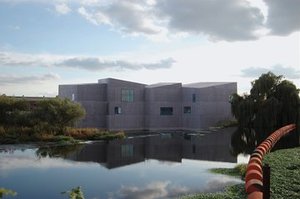 And so it is. That comes from an article published in Sunday’s Telegraph that argues that Hepworth deserves better. And now that she has a new museum of her own, in Wakefield, Yorkshire, England, maybe she will. It complements her studio-garden museum at the Tate St. Ives in Cornwall.
And so it is. That comes from an article published in Sunday’s Telegraph that argues that Hepworth deserves better. And now that she has a new museum of her own, in Wakefield, Yorkshire, England, maybe she will. It complements her studio-garden museum at the Tate St. Ives in Cornwall.
The £35 million Hepworth Wakefield museum (right) opened on Saturday; it was designed by the increasingly popular David Chipperfield (although, according to the BBC, some locals don’t like this one). It has ten galleries, and will show the work of other artists as well as Hepworth’s abstract sculptures.
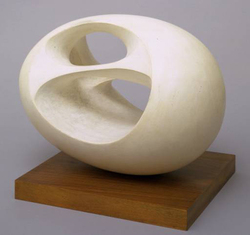 The “Hepworth Family Gift” consists of 44 full-size working models, prototypes in plaster and aluminium made in preparation for the works in bronze Hepworth executed from the mid-1950s to the end of her career. It also includes drawings, plus a large group of lithographs and screen prints by Hepworth.
The “Hepworth Family Gift” consists of 44 full-size working models, prototypes in plaster and aluminium made in preparation for the works in bronze Hepworth executed from the mid-1950s to the end of her career. It also includes drawings, plus a large group of lithographs and screen prints by Hepworth.
After a sneak preview, Wil Gompertz, arts editor of the BBC, said “Barbara Hepworth is one of the great artists of the 20th Century and these plaster sculptures give a particular insight into how she worked. I’m delighted they are now on public view.”
But to return to the art world’s indifference in recent decades, experts note that Hepworth felt, as did others, that she was always in the shadow of Henry Moore. Notes the Telegraph:
There are many parallels. Both came from Yorkshire, studying in Leeds, then at the Royal College of Art in London. Both were at the forefront of a generation of sculptors that emerged in the Twenties and believed in the Modernist credo of carving directly into wood or stone.
Maybe Moore is due a reevaluation, too.

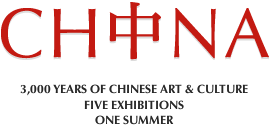 This is the same show that recently left the Metropolitan Museum and previously drew crowds at the Peabody Essex Museum. But Ai Weiwei’s arrest had not yet occurred when those exhibits opened. Coming last on the tour, MAM has had ample time to consider its position — and do to something.
This is the same show that recently left the Metropolitan Museum and previously drew crowds at the Peabody Essex Museum. But Ai Weiwei’s arrest had not yet occurred when those exhibits opened. Coming last on the tour, MAM has had ample time to consider its position — and do to something. 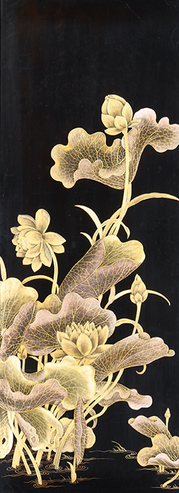
 Here’s the link to the
Here’s the link to the 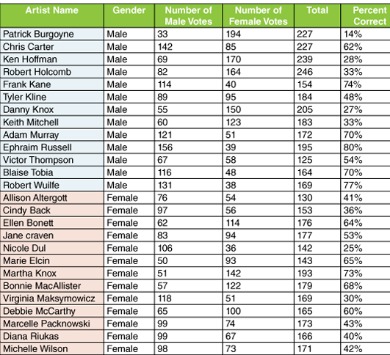 The premise was this: Works by women artists were shown side by side with works by male artists of their chosing. Neither work was attributed on the wall labels, and viewers were asked to mark, on ballots, who they think made what — female or male.
The premise was this: Works by women artists were shown side by side with works by male artists of their chosing. Neither work was attributed on the wall labels, and viewers were asked to mark, on ballots, who they think made what — female or male.